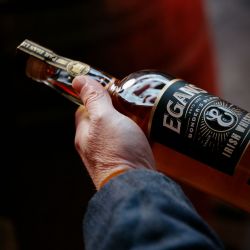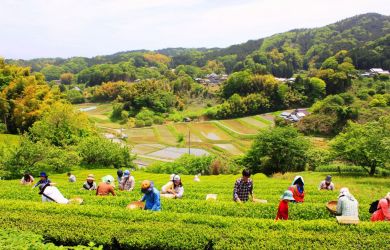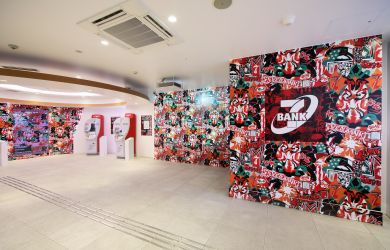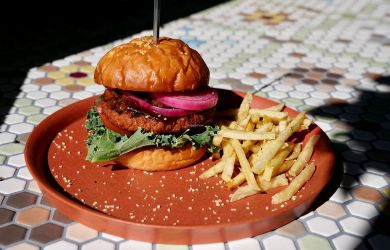
Originally published on metropolis.co.jp on May 2014

Federico Heinzmann is the new chef de cuisine at the Park Hyatt Tokyo’s New York Grill. The Argentinian is stepping into big shoes, notably as the hotel marks its 20th anniversary this year. The dark-haired Heinzmann is talkative and engaging as he tells Metropolis about his cooking techniques, how his dishes come together and working in a new country.
Of his new kitchen, he says he has the “best office in the world.” Anyone who has seen Sofia Coppola’s Lost in Translation will immediately recognize the floor to ceiling glass on the 51st floor. The 360 degree panoramic views are breathtaking—even for jaded Tokyoites. He sees that customers come in and enjoy how they are taken in with the setting—and that is the starting point for all meals at the New York Grill.
Prior to Tokyo, Heinzmann worked in Buenos Aires and most recently in Seoul.
Having learned a lot about seafood in Korea, he continues his education of fresh fish in Tokyo, which he says is “not in our genes.” As an Argentinian, he grew up eating a lot of meat.
His discussion about traditional Latin American dishes like ceviche and tiradito is educational and we learn that the former is made from diced seafood while the latter from thin slices. He says that while most people think ceviche is based on tart citrus like lemons and limes, it wasn’t until the Spanish came to South America that the dish evolved to those tastes. Originally, ceviche was made with fruit like papaya, mango and passion fruit.
We try his tiradito of passion fruit and aji panca, a Peruvian red pepper, that liven up thin slices of grilled octopus. The aroma is like fiesta-like and a great opening number to the evening. He likes to start meals with something refreshing and bright, and he catches our attention.
While he says that much of the focus in Argentinian cuisine is on the meats, he is most animated when talking about vegetables. He is very excited about the variety of vegetables in Japan—its ten types of garlic, for example. While some chefs may work with vegetables as a side dish or a garnish to a plate, he puts a lot of consideration here. “It takes more effort if I can surprise you with a leek, a cauliflower or a carrot.”
As Heinzmann adjusts to the Japanese marbled wagyu, he has had the tough job of eating through many different types. Currently one he fancies is from Yonezawa in Yamagata. Regarding the fat in the meat, he says simply: “Fat is taste and we need to manage the taste.”
He is always “looking for a new way to present something simple” which can be seen in his interesting uses of veggies—like dried black olives crushed into powder as a way to add a deeper flavor of salt. Sweet, fermented black garlic is made into a sauce with beef stock and olive oil. Carrots are cooked in carrot juice to intensify the flavor.
The dishes are based on classical technique and style, and are composed with the eye of a former artist. Indeed, prior to becoming a chef Heinzmann was a pottery instructor. The philosophies of his kitchen are to “follow nature” and to “construct your food from what you have, not what you want.”
He ends the interview by saying: “Cooking is not a job, it is something I love to do.”
We look forward to watching his cuisine evolve as the seasons change.
New York Grill at the Park Hyatt Tokyo. 3-7-1 Nishi-Shinjuku, Shinjuku-ku. 03-5323-3458. Nearest stn: Shinjuku.





